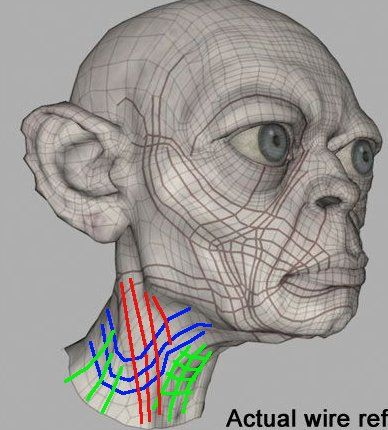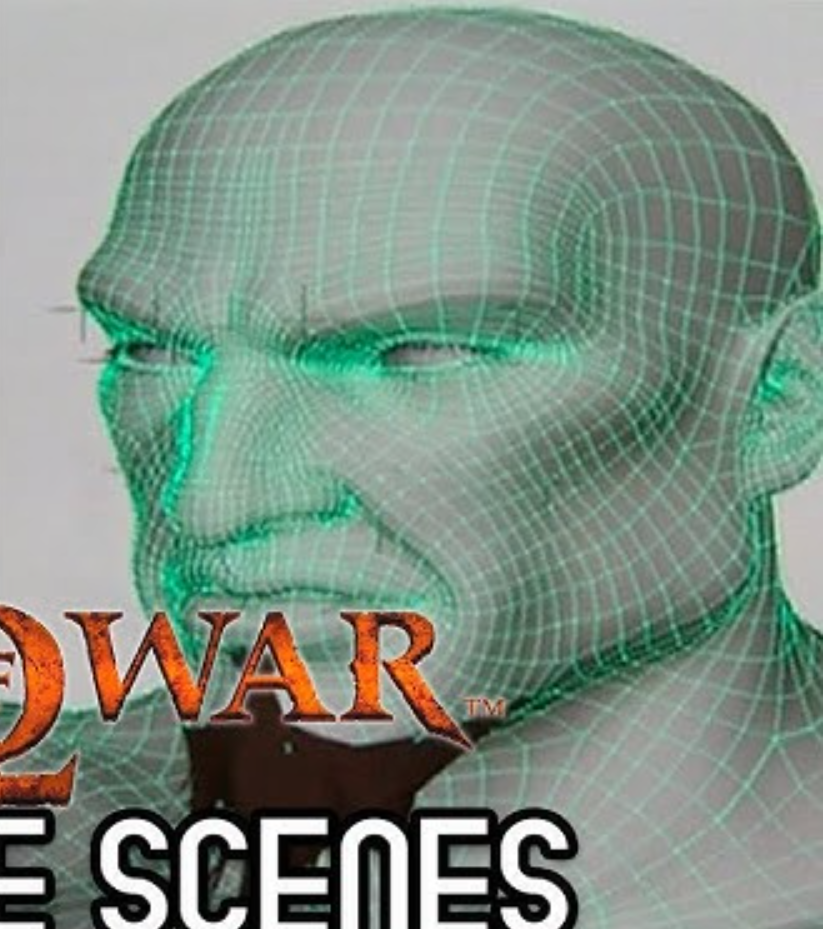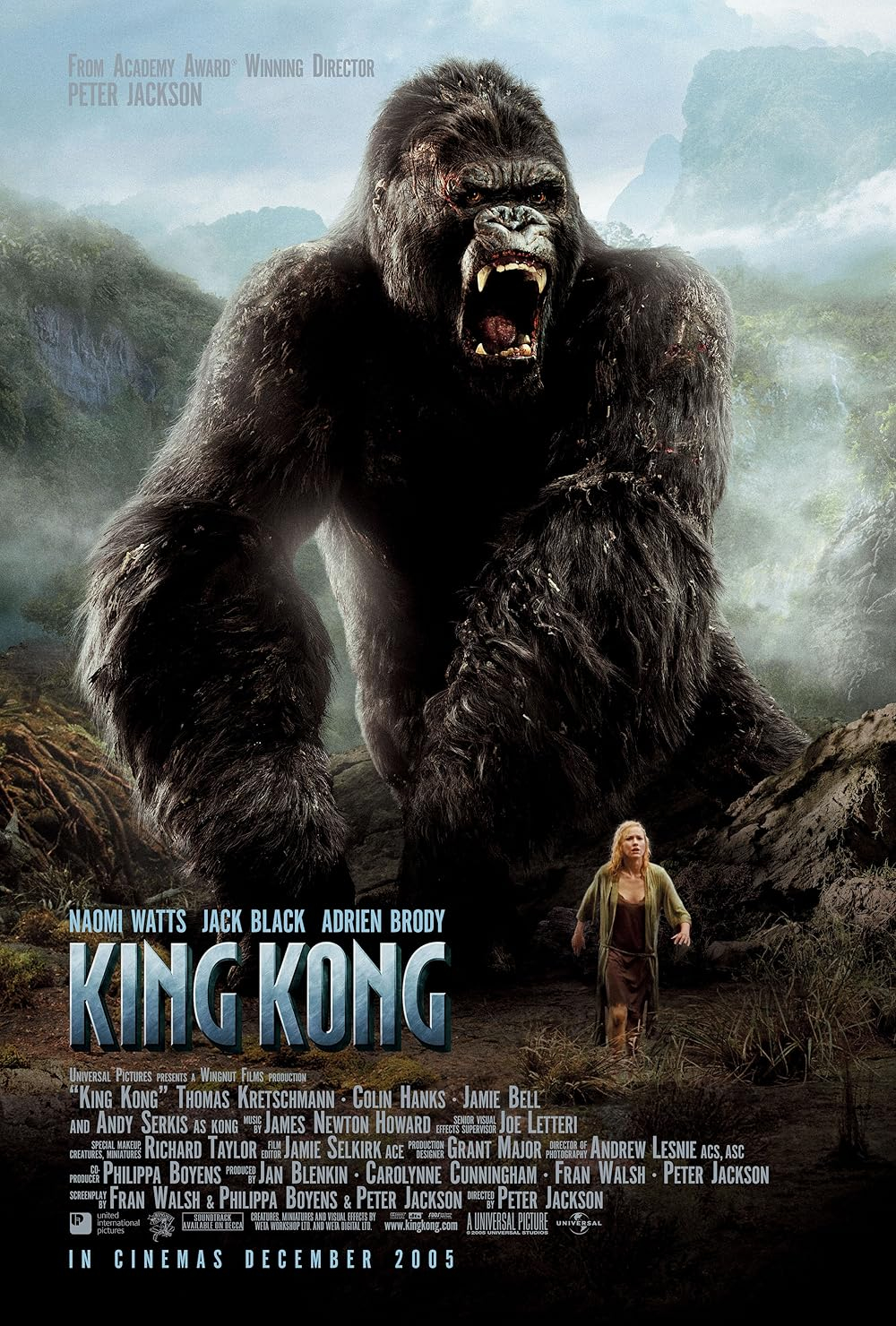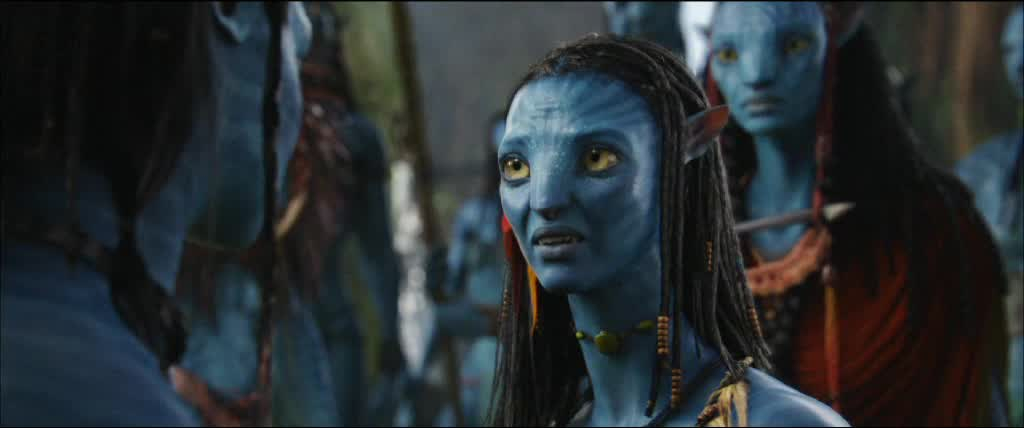The BRAWL² Tournament Challenge has been announced!
It starts May 12, and ends Oct 17. Let's see what you got!
https://polycount.com/discussion/237047/the-brawl²-tournament
It starts May 12, and ends Oct 17. Let's see what you got!
https://polycount.com/discussion/237047/the-brawl²-tournament
Early-Late 2000s CGI/Game Models
Making a new thread so the texture one can stay textures and this one can stay models
Now that I have gotten many helpful responses on my other thread, I now have questions about MODELS.
I found this book that goes over creature modeling from the person that worked on the King Kong movie in 2005,
https://www.amazon.com/Maya-Techniques-Hyper-Real-Creature-Creation/dp/1897177046
But it doesn't really exist anymore, one left, 60 dollars, and no ebook.
In the early 2000s how did they achieve things like Gollum?

Or Kratos?

Kong?

Avatar aswell

If there are any books, videos, or information that anyone has, it would be extremely helpful. I'm trying to get a greater understanding how they crafted these outstanding pieces of work with the limitations they had, vs what we have now.
Now that I have gotten many helpful responses on my other thread, I now have questions about MODELS.
I found this book that goes over creature modeling from the person that worked on the King Kong movie in 2005,
https://www.amazon.com/Maya-Techniques-Hyper-Real-Creature-Creation/dp/1897177046
But it doesn't really exist anymore, one left, 60 dollars, and no ebook.
In the early 2000s how did they achieve things like Gollum?

Or Kratos?

Kong?

Avatar aswell

If there are any books, videos, or information that anyone has, it would be extremely helpful. I'm trying to get a greater understanding how they crafted these outstanding pieces of work with the limitations they had, vs what we have now.
Replies
http://www.theminters.com/misc/articles/derived-surfaces/
Bay Raitt, who contributed the images in this article and led the Spiraloid forums (not unlike Polycount, but focussed on SubD modeling), later worked on Gollum.
@Neox also produced some very clean SubD models early on.
Your question seems to imply a difference between "then" and "now" ; yet there is nothing special about the screenshots you show. As mentionned above these models were built then the same way they would be built now - the software of choice might differ, but the toolsets and processes are the same, ie building shapes and volumes by editing polygons in space. Anyone can learn the basics of that in about a day with a mentor (been there, done that).
But perhaps you are not so familiar with polygon modeling in general ? You could maybe show examples of models you've built yourself so that we could get an understanding of where you're at. I'd love to understand where this assumption about current day models being any different from old ones could possibly come from.
(And of course sculpting tools being available at the time is largely irrelevant. For instance the first Kong movie coincides with the early releases of Mudbox, but this didn't affect how the base mesh was made - outside of it needing to match the high of course).
This is still a great watch:
We have more resources here on the technique:
http://wiki.polycount.com/wiki/Subdivision_Surface_Modeling
What I meant was, I find it crazy that Kong or Gollum or any of these high quality games that came out doing the time didn't have any aspects of sculpting. I didn't know if there was any kind of secret sculpting software that let them get higher details into the model. (If that makes sense)
Edit: And before Subdivision Surfaces, you had Nurbs, which was much less flexible. Still used for hard surface modelling, but not great for organic stuff.
To the OP :
- Alright, so we have established that there is no "then" VS "now" in regards to polygon modeling - it's all been the same for 20+ years. So these screenshots of the Gollum and Kratos wireframes are hardly relevant.
- No sculpting is needed in order to get a high detailled look for film and still renders. Displacements maps applied at render time after subdivision can and have been painted by hand since forever. But of course they can be baked too.
- CG magazines from back then showed great examples of very cool, detailled art done without any sculpting or baking ! As a matter of fact some looked more original than the samey cookie cutter stuff we see everywhere today. Would love to track back some of these pages ...
- Zbrush is old, like, 26 years old for the initial "2.5D" version and the projection master trickery that soon followed (IIRC). I think regular 3D sculpting showed up in ZB in 2.x, so that's around 2000-ish. And the original Skymatter version of Mudbox released around the time of the Kong movie, in 2006.
Fun stuff. Looking back at old CG is certainly refreshing, espcially compared to the avalanche of ressources and computing power used today. It sure is rough around the edges, but isn't this cool ! (art for the 1999 Ring PC game)
This artist did it through projection in Zbrush :
https://texturing.xyz/pages/jonas-skoog-black-guy-making-of
And sure enough, the displaced details on Monsters Inc. characters where not sculpted but simply textured. If anything it keeps the designs streamlined and striking ...
Especially with the emergence of normalmaps in the 2000s.
you can combine and mix modelling/Sculpting/texturing.
Back then they for example painted 2k textures of the snout of a dinosaur...
There was and is a big difference between in-house tools and what the rest of the industry was/is able to get their hands on.
there was also Amazon 3D Paint available.
which was used by many companies and projects.
amazon3dpaint.pdf
Capcom in ~2009 used Bodypaint3D(4.5) for Monsterhunter3 or at least that is what an advertisement from that time told...
to get back to the threads topic, there was this funny looking device from Geomagic which was used with their Freeform Software?
I think some members here have first hand experience with it and can write more how it worked or didn't work.
For Tron it was probably more this device in the below video.
can also be seen around 2:20.
Where are the sources of information that people during that time used to learn? I can't seem to find ANY. Books, videos, magazines, anything.
I've been trying to look for videos or timelapses of people EDGE modeling complete realistic 3d heads, ears, nose, and all. But I'm at a dead end. (I know how to edge model, but I like to have videos to watch other peoples approaches to it.)
With BOX modeling, when people add loops to add more detail, sometimes they create ngons, how is this done? Is it some sort of knife/multicut tool they use? Usually when you add in new loops it goes all the way around and follows the edge flow, but from some videos I've seen, they were able to isolate the edge in a certain area, example:
A lot of your questions will be answered though by just diving into the modeling tools yourself.
Things like "edge modeling" or "box modeling" (or "strip modeling", or anything else really) are just casual terms that artists make up on the spot to summarize a given approach they like. You won't find books on these things. Perhaps some video recordings done by artists to document this or that trick, but nothing of substance - because it would be pointless. What you need first is to master the polygon modeling toolset of your software, in and out.
If you don't know where to start (for instance if the software you are using doesn't have any official Getting Started content - like this is unfortunately the case with Blender, as the official Blender help link basically states "we have no time for this, go look for stuff on youtube lol") then look up *quality* educational content from older sources. I mean specifically older in this case in order to avoid sculpting-centric material. You could basically sort through Gnomon DVDs and look for anything related to character modeling from 2010 or earlier. They had top-notch content.
https://vitalybulgarov.com/dvds/
https://www.ebay.com/shop/gnomon-dvd?_nkw=gnomon+dvd
Or, look up any version of the "Johan of Arc" tutorial PDF even if it isn't ported to your own software. You'll see all the steps people go through when building polygon models from scratch, you'll learn the generic names of the various tools and actions (extrude, merge, divide, delete ...), and you'll then be able to research how to perform these action in any software easily. Heck, you could even download help files from various software and research the tools that way.
https://fr.scribd.com/document/51416931/Joan-of-Arc-3dmax-tutorial
https://store.3dtotal.com/products/joan-of-arc-cinema-4d-download-only
At the end of the day you should be able to build any mesh topology that you can think of (or draw on paper). If you can't, then you're not familiar enough with your software. People learned all these things back then by studying the aforementionned ressources as well as studying casual video recordings of artists at work, shared in places like ... Polycount
Some gifs from cool artists in action :
https://imgur.com/a/csZuw#pn5lrBu
Also the Vertex books by Ryan Hawkins are still as awesome as ever, and should be easy to find a DL for since they were a community project released for free. These are not just about polygon modeling though of course, they cover anything that the contributing artsts wanted to share.
https://gamefromscratch.com/free-art-e-book-vertex-released-by-ryan-hawkins/
More recently, I've seen people pick up polygon modeling from complete scratch as a direct consequence of their interest in modding games or contributing to a Steam Workshop. In such cases the information is mostly in the corresponding Discord servers.
At the end of the day, it all comes down to studying good models and being able to create any topology. Videos are cool and all and they can reveal neat tricks, but at the end of the day a polygon is a polygon.
The thing is, I don't know how to find older sources, believe me I have tried. I don't know where to find older videos or books. If you can tell me how or where to find them, that would be extreme help.
https://www.ebay.com/shop/gnomon-dvd?_nkw=gnomon+dvd
Phisical media is the king of preservation - it is as true for TV shows delisted from streaming platforms as it is for educational content from a few years ago.
And it takes about 2 seconds to find the newest official dl link for the Vertex books I mentioned.
https://ryanhawkins.gumroad.com/
You could also look up Dominance War winners - Slipgatecentral has tons of content on his YT channel.
Or, you could also just post your best attempt at something you're trying to do in this thread and get personalized help. https://polycount.com/discussion/56014/how-the-f-do-i-model-this-reply-for-help-with-specific-shapes-post-attempt-before-asking#latest
The question about ears still doesn't make sense ; it doesn't "now", and it didn't "then". Same goes for the question about the loops - if you know polymodeling, you know how to make such meshing. If doesn't matter one bit if the artist used some exotic way of doing it, since it is dead simple to reproduce anyways. And in this case you obviously have the video of it to study it in action.
Perhaps you'll see things more clearly in a few days/weeks after looking at some of the many ressources provided in this thread
If I look up "3D modeling character books from the 2000s" or "3D modeling books from the 90s," I don't find anything. Same goes if I want to look for videos. I don't know how to find them. How can I find what was available during that time if I decided to look on my own?
So in your case it's less of a matter of looking for things through indexed search (as indeed you won't find such listings of DVDs or books through search on this or that keyworkd), but rather a case of, well ... asking humans if they know about anything they could suggest. Which is precisely what is happening here
You're phrasing it as if speaking to a person or chatbot. Books being published today aren't described as "books from 2020s" now; Books from your data range weren't described like this when published either. Only people chatting about them today would phrase it like this, and given that book blurbs are rarely, if ever, updated, you simply won't get direct matches this way.
Try an advanced search using a data range and keywords only like "3d character book". You should also try Google Books, which can filter by date as well. While you won't necessarily find the bestsellers this way you'll find plenty books to look up.
Alright, thank you. Would you have any free pdfs that I can use? The other ones I have to pay, money isn't a problem, I just want to know my other options first haha.
Oh and the Joan of Arc thing, what happened to the original with Michel Roger? I can't seem to find it anywhere. I get it's all the same techniques, but I'm still curious. I like reading on these thihgs, that's another reason why I try to look for these books or videos, I simply like to read or watch them haha.
You're missing the point Celosia is trying to make. I suppose you're not a native english speaker ?
The point is that only people chatting one on one would describe a book about a given topic from a previous period as "a book about [topic] from the 2000s". Thats something understandable by a human, but not something that would ever appear in the title of the book itself or in its original indexation written back then. Hence it would not be picked up/retrieved by search - outside of, perhaps, getting a hit on some obscure but recent blog post from someone reminiscing about these things.
However if you do have access to a search field for the original publishing date (as I assume most librairies do), then you could filter by that.
Anyways, you have more than enough ressources now to keep you busy for weeks.
5rettski said:
https://www.thehobbitguy.com/tutorials/polymodeling/index.html
Way back when our English was so rudimentary, we didnt know that timelapse means speed up.
So we tried to hit Irfans speed doing the same thing over and over and over again hot seating on Hannos PC, we got close, tho never this fast.
Took me a while to realize why we couldn't hit it, hehe
Good old times
Updated On: Dec 12th 2024
Done in a software called Mirai
https://spiraloid.artstation.com/projects/KPyRB
this stuff is still so impressive, especially considering the time its from!
We also have some archives of the old now-defunct modeling forums Spiraloid and Subdivisionmodeling, see the PDFs here http://wiki.polycount.com/wiki/Subdivision_Surface_Modeling#Organic_Surfaces
Wings3d was a pretty decent homage/replica that was still supported post 2000.
A swift google reveals that Nendo was a 1998 release which tracks with me seeing it at a trade show in 96/97 where I was told it was the modelling bit of Mirai (also present on the stand). It seems that Nendo was inspired by the modeller in N-world/Mirai and developed under Nichimen but you're likely correct about it being an aquisition.
The max 4 argument is about getting editable poly as a first class citizen. To me at least - the more intelligent handling of geometry was the foundation of what made my perfectly legitimately acquired copy of Nendo better than everything else - the ui stuff is a secondary concern.
in addition - it looks like wings3d is still getting updated
https://www.wings3d.com/snapshots/
This is from 2002, and was done with much less resources than what we have access to today especially in terms of rendering speed and power. Yet the artist managed to make it work : the scene is not overly detailed but it is still fully textured and has convincing lighting, and above all the composition and pose are well thought out and tell a story. Very cool stuff.